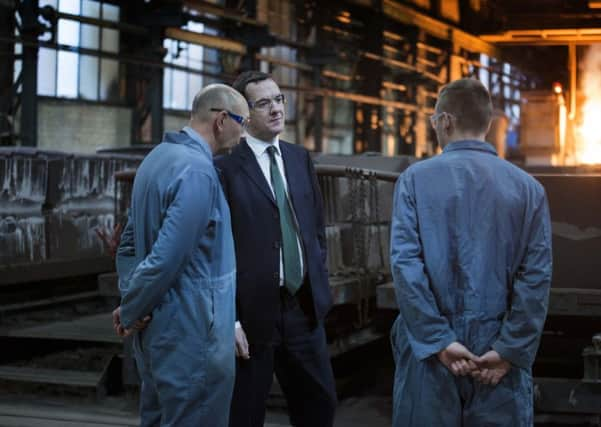Take the Powerhouse to heart of London


The task for local communities is to build new industries and create new products to make and sell; to encourage local entrepreneurs to take risks and create new businesses and to re-skill local people so that they have the means to make an economic contribution to their community and build successful and fulfilled lives in the place of their birth.
But towns, cities and regions cannot be successful by ‘going it alone’. We all have to work together. And there is no better example of this than the role of London in driving the UK economy. The capital generates 22 per cent of UK GDP despite accounting for 12.5 per cent of the UK population. Between 2003 and 2015, London secured 39 per cent of all foreign direct investment projects into the UK.
Advertisement
Hide AdAdvertisement
Hide AdSome critics say that the scale of London’s dominance needs to be ‘cut down to size’, with industries, jobs and investment moved out of London. But this cannot be the right way forward. If UK town and cities are to have a lasting and sustainable future, they need to regenerate themselves from the grass roots upwards. The scale of the task is too great to be able to transplant successful London industries ‘up north’. After all, you can only move the BBC to Salford Quays once.
But the other important fact is, that when London succeeds, it helps the rest of the UK to succeed. Research from London & Partners, the Mayor’s Inward Investment agency, shows that 12 per cent of foreign direct investment projects in other parts of the UK stem from an investment in London. These projects contributed £7.6bn to the UK economy between 2003-2015 and created over 38,000 jobs outside London.
The question we need to ask is how can we use the ‘London economic engine’ to help generate opportunities for the rest of the country? The clues are in how things work now.
Research from the Centre for Cities shows that London-headquartered businesses are the most prominent in over 60 UK cities outside London. For example, in York and Crawley, more than one in five private sector jobs are employed by a London-headquartered business. And since 2008, firms headquartered in London have increased the number of people they employ in their branches in 49 of 62 cities outside of the capital, according to the Centre for Cities.
Advertisement
Hide AdAdvertisement
Hide AdWe also know from experience, that in terms of capital investment into regeneration, international developers and investors say that they want a flagship project in London first, then they will consider other parts of the UK.
Surely it makes sense to build on this by increasing collaboration between London and the rest of the country to close the infamous ‘North-South gap’.
We need to use London to show investors what our other great cities have to offer, culturally and economically, e.g. good universities/skills, lower cost base, great quality of life. We need to use London’s success to give the rest of the UK a platform to the world.
This is no time for holding back, particularly in the post-Brexit world. The UK’s cities need to ‘camp out’ in London and make the case to London-based companies to open up a branch in their town or city.
Advertisement
Hide AdAdvertisement
Hide AdSo, instead of having a ‘bits and pieces’, ad hoc approach, let’s give it shape and direction. Our northern cities should open a ‘Northern Powerhouse Embassy’ in London where they can showcase what they have to offer to London-based and international investors. The ‘Midlands Engine’ and other regions can do likewise, and use London’s economic success and location at the centre of international trade routes as an asset for the whole of the UK.
For those who think there is no need for this kind of bold action, just remember that there are about 80 foreign investment promotion agencies with a presence in London trying to persuade UK companies to invest overseas. UK towns, cities and regions need to be on a ‘level playing field’ to compete for this growth.
The sad and current reality is that if a London-based UK company is looking for expansion opportunities, they are more likely to be contacted by or find one of the 80 foreign agencies than one representing the UK or its regions. We need to change this as a matter of urgency and the Northern Powerhouse cities can lead the UK to get the investment moving up the M1 and M6 rather than through the Channel Tunnel.